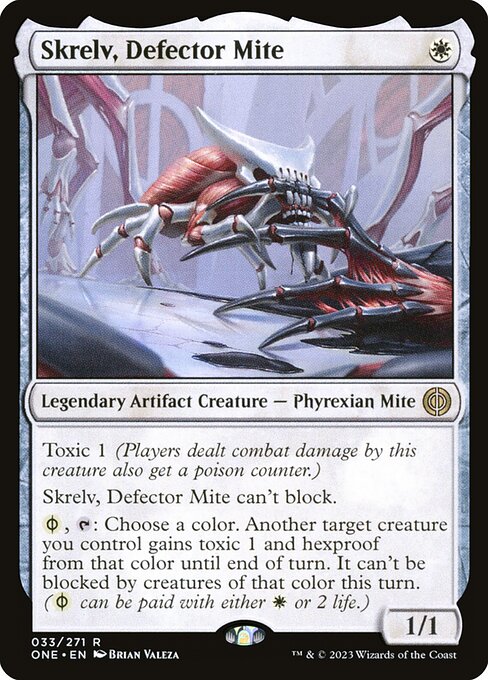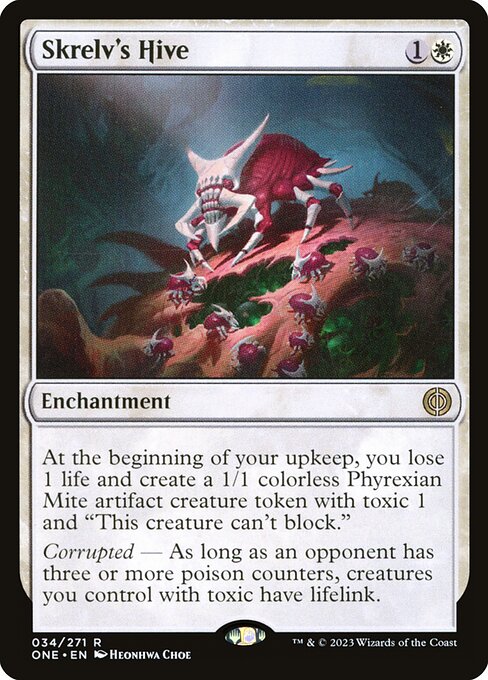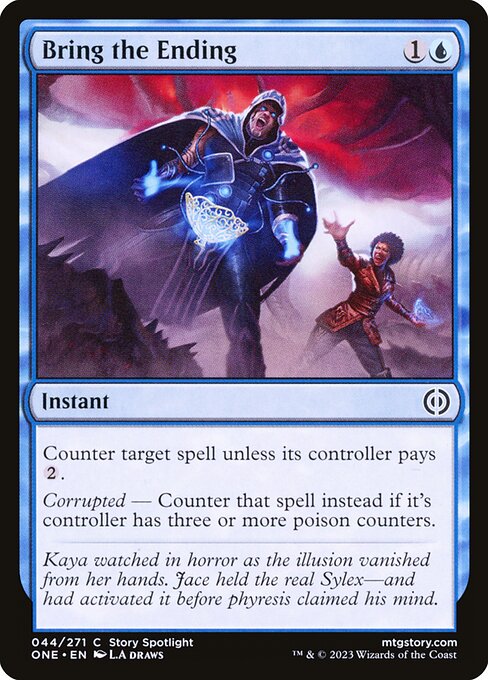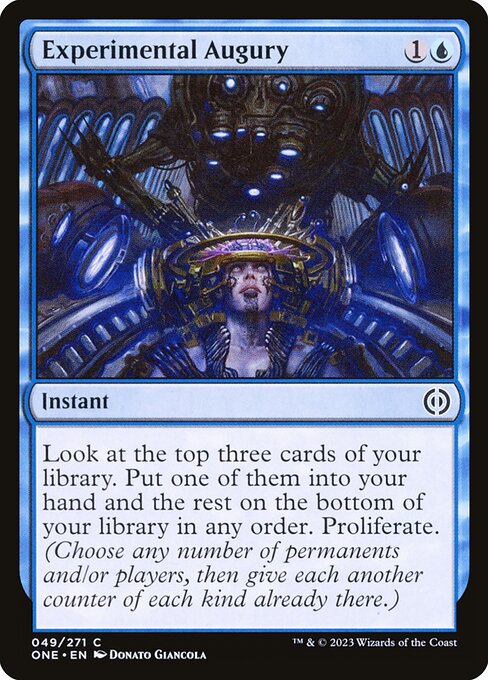Table of Contents
Do you like being aggressive? How about stopping your opponent from having any fun and possibly causing them to rage-quit an entire match in game one? Are you allergic to spells costing more than 2 mana? Then do I have the deck for you!
Today I want to showcase my latest Standard brew and love affair: Esper Toxic! This dynamic tempo deck combines aggression and disruption in a beautifully synergistic toxic package, providing some blistering aggro starts with a surprising ability to grind out longer games. Here’s the decklist and gameplay videos for 3 of the common matchups!

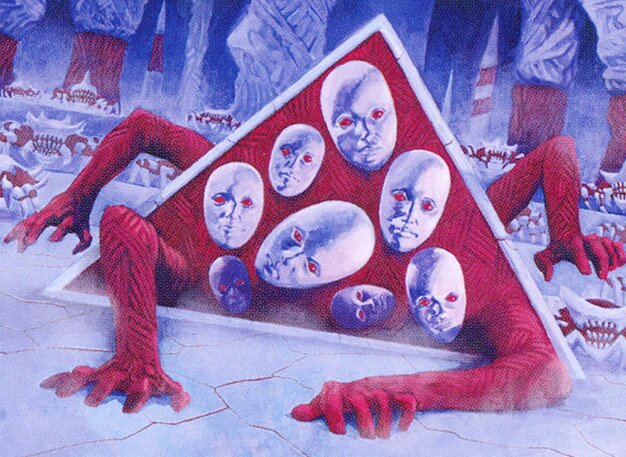
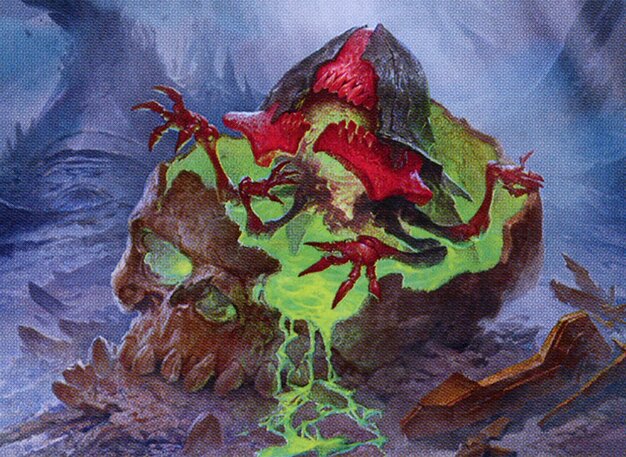
Creatures (13)
Instants (20)
Sorceries (2)
Enchantments (4)
Lands (21)
60 Cards
$124.4
Sideboard
15 Cards
$18.63
What is a tempo deck? I arbitrarily define it as a strategy that sticks an early threat while preventing the opponent from deploying their own game plan with cheap and effective interaction that generates tempo by trading up on resource investment. Trading up on resources means answering your opponent’s play with a cheaper card, like countering a 4-mana spell with a 2-mana counterspell, giving you two extra mana to spend on pulling ahead with a threat or another effect.
A simple example of this is playing a turn one creature with Toxic 1, stopping the opponent’s turn two play with removal or a counter spell, then double-spelling on turn three with another 1-mana creature and 2-mana removal or counterspell.
If the opponent’s turn 3 play is a 3-mana spell like Fable of the Mirror-Breaker and we counter it with Bring the Ending, we have traded up on resources and gained a major tempo advantage.
You’ll feel like Gerry Thompson playing Standard Delver in 2012! OK, maybe not quite like that, but the feeling is thrilling! This article is a deep-dive on card choices, deck theory and identity, tips and tricks, and some major matchup side boarding.
Card Choices

1-mana threats: Eleven 1-mana Toxic 1 creatures because we always want to play a turn one creature and frequently want to play a turn three creature plus 2-mana spell. Skrelv mostly serves as an additional turn 1 toxic threat with the occasional ability to create an unblockable attacker that hits for 2 poison counters (two instances of Toxic 1 give 2 poison counters). Its ability that grants hexproof is secondary, but worth remembering.
4 Skrelv’s Hive: The deck’s all star! Hive on-curve does everything you want for only two mana upfront – providing a continuous stream of threats while allowing you to keep your mana open for instant-speed interaction. The Corrupted ability giving all your creatures Lifelink is very clutch in close games. Hive has a tendency to paralyze your opponent with fear; if they have any pressure they should probably try to race Hive instead of waiting around trying to block, but they frequently don’t attack until it’s too late and we can attack through their blockers anyways.
2 Voidwing Hybrid: I have played this card in many different brews, and have found that it’s generally too slow for the format unless your strategy is more controlling and looking to go long. In a tempo deck looking to end the game fairly quickly, I wasn’t happy with a full playset, but I like 2 copies as additional ways to play a turn two threat on the play while also giving the deck some defensive capability and extra grind.
7 counterspells: Bring the Ending is amazing early and late as the deck is very good at achieving Corrupted. Countering any spell for 2 mana is one of the most powerful effects in Magic, and truly over-powered in Standard. Make Disappear is additional early-game permission, but is also powerful later in the game with all the tokens and Crawling Chorus we have that are great fodder for its Casualty 1 ability.
9 removal spells: Anoint with Affliction is the core of the removal package, answering any early threat while coming online later to also exile expensive creatures like Sheoldred, the Apocalypse or Atraxa, Grand Unifier for only 2 mana! Cut Down is a great tempo card that answers a lot of the two and three mana threats in the format and allows us to have more multi-spell turns. Fading Hope serves a similar purpose to Cut Down in early turns, while having the added utility of cleanly answering tokens and being able to generate tempo against larger threats later in the game. Destroy Evil is the fifth way to cheaply kill big stuff while being a nod to Fable of the Mirror-Breaker and Wedding Announcement that can be challenging when they resolve.
Card Draw: Experimental Augury is a way to find what we need in a given game while adding poison counters, and can end games when chained together. Since we play mostly instant-speed spells, it’s great on turns where we didn’t have to spend all our mana on disruption effects. Distorted Curiosity is our card advantage spell. 2 copies feels right for now because it is very clunky on the draw or in multiples early on.
Lands: Not gonna lie, Frank Karsten probably won’t approve of the slightly greedy manabase. Frank recommends having 13 sources of a color on turn 2 to reliably cast a spell with one colored mana pip on-curve.
To cast an instant on our opponents turn with two lands in play, we have 10 sources of white, 11 sources of black, and 13 sources of blue. I slanted it towards blue to prioritize a turn 2 counterspell when needed.
The deck has plenty of sources to cast its creatures and Skrelv's Hive on-curve. We only want to play untapped lands in a deck that’s only 1 and 2 mana spells, so we run 9 painlands on the premise that our deck’s wins come from getting ahead early and we can afford the pain to do that as smoothly as possible.
Mirrex is a nightmare for a lot of decks to deal with and frequently helps us close games and find the final poison counter, while also giving us a quick boost of colored mana if we need to play it early for a creature or Skrelv's Hive. The Seedcore is a great way to play any of our creatures on turn one while also grinding through blockers late game by making our threats bigger with its Corrupted +2/+1 tap ability that pumps all of our creatures besides Voidwing Hybrid. A 2/2 split on these utility lands has felt right for now, but I am open to feedback! I’ve tried running a third Mirrex in the main, but I was too often flooded on colorless sources early so I moved it to the sideboard for grindy matchups.
Right now I’m not playing any basic lands because there aren’t too many Field of Ruin effects running around, but this could change as the meta evolves. The land count is worth constant evaluation, but for now, 21 lands is my pick. When I try playing fewer, I tend to mulligan too many hands with only 1 land, but more than 21 lands leads to mana flood in such a low-curve deck. Hitting 4 lands in play is our magic number at which point we can either activate Mirrex or play 2-3 disruption spells in a turn cycle.
Notable Absence: I have tried to main deck Venser, Corpse Puppet in this deck (and many others), but it simply contradicts the deck’s play pattern. As an attacker it’s much too slow for 2 mana, it doesn’t have evasion and is easily blocked, and the deck doesn’t want to play defense. The value generating ability of creating a 3/3 golem is nice, but dwarfed by a metagame full of powerful midrange decks with much better value engines. I include 2 copies in the sideboard because it is powerful against other low-curve decks looking to attack on the ground though.
SWOT (Strengths, Weaknesses, Opportunities, Threats)
This deck is incredibly fun to pilot, having the speed of an aggro deck with some fast starts while also being rich in strategic decision-making and resource use. Sometimes you play 3 1-drops by turn 2 and end the game after one piece of disruption, other times a turn 2 Skrelv's Hive will win the game on its own. The Standard metagame is mostly dominated by high-power midrange decks looking to play the best spells at each point in the curve and dominate the late game with unbeatable value engines. Esper Tempo preys on these strategies by getting underneath them with threats, and then stopping them from developing their more expensive threats long enough to close the game out. Winning via poison counters is perfect for a tempo deck because it shortens the clock, and once we achieve Corrupted, our spells become even more potent. As an aggressive tempo deck, it’s an absolute house on the play.
The issue is though, its major strength is also its major weakness. This deck is bad at playing defense or playing catch up when far behind, and my win percentage on the draw hovers between 50-55%. Not everyone will like this play style and feeling somewhat at the mercy of the dice roll/RNG, but from a statistical perspective, the overall win rate is still quite good given its absurd strength on the play. While Bilious Skulldweller, Voidwing Hybrid, and Crawling Chorus can be valuable blockers, Skrelv, Defector Mite and Mites simply cannot block.
If we aren’t presenting a clock and pressuring our opponent, we will likely run out of interaction and the powerful midrange decks will stick a threat that we cannot deal with. This is mitigated by the value engines of Skrelv's Hive and Mirrex being able to win some grindy late-games. Even though the Mite tokens we pump out can’t block, their presence makes our opponents less likely to attack out of fear of our counter-attack and potential life gain with Skrelv's Hive. Eventually, we will swarm over their defenses and be willing to sacrifice some Mites in combat to push poison through.
The biggest metagame concern, in my opinion, is the deck’s weakness to a resolved Fable of the Mirror-Breaker or Wedding Announcement, which are two of the most played cards in Standard. I’m not scared of them because they frequently don’t resolve, which is why I play seven 2-mana counterspells in the main deck (and one Destroy Evil as a backup). Even when they do resolve, I still win a good chunk of those games swarming with Mite tokens. After sideboarding, we bring in some combination of Duress, Negate, and Destroy Evil that even further mitigate this weakness.
Esper Tempo is well positioned right now because the metagame is mostly slower, grindy value decks like Mono White, Mardu, and Grixis. Control is a great matchup because of our low curve, Skrelv's Hive, and Mirrex, but sweeper effects need to be planned for. It has a tough matchup (especially game 1) against other aggro decks because of the high number of counterspells and creatures that can’t block, which are mostly dead draws against aggro after turn three or four. If the metagame shifts in favor of fast aggro decks like Selesnya Toxic, the 75 will need to be reconsidered and scrutinized for viability.
Mulligan Strategy
Mulligan decisions play/draw taken into account are a crucial skill in high-level Magic. Esper Tempo is not an incredibly challenging deck when it comes to mulligan decision making. The ideal hand has a 1-mana threat, a Skrelv's Hive, 2-3 lands, and some interaction. The infrequent opening hands that have only interaction and no creatures or Hive are 100% mulligans in my opinion. If you have any combination of threats and interaction, it’s likely a keep! I think the toughest decisions are hands on the draw that contain only Skrelv's Hive as a threat and light interaction, as you can easily get run over depending on the matchup.
Matchups and Sideboard Guide

I won’t go over every possible Tier 1-3 deck, but for common matchups I’ll provide a high-level review, highlight the most threatening cards from the opponent, and show my sideboard plan for the play and the draw. In general, Esper Tempo is favored when the opponent is slower and not applying real pressure to our life total, and it’s a bit tougher but very winnable when faced with early aggression. Take this as a guide, not a bible, and feel free to improve upon it and share your ideas with me! Bring in the third Mirrex in grindy matchups that trade resources and go long.
Grixis Midrange
| IN | OUT |
|---|---|
| +4 Duress | -2 Make Disappear |
| +1 Mirrex | -2 Bring the Ending |
| +1 Negate (on the draw) | -1 Experimental Augury |
| -1 Voidwing Hybrid (on the draw) |
This is a favorable matchup overall, as their removal lines up poorly against our one mana creatures and Skrelv's Hive. Their best draws against us are their aggressive draws with turn one Cut Down, turn two Bloodtithe Harvester, and turn 3 Corpse Appraiser or Fable of the Mirror-Breaker, which is why we keep in cards like Fading Hope and Cut Down to try and gain tempo advantages early and apply pressure. Bouncing value creatures like Bloodtithe Harvester and Corpse Appraiser is poor in a very long game, but a good play if we have early pressure.
Ending the game quickly prevents the opponent from using the extra resources they can gain by replaying these cards. If they untap with a Reflection of Kiki-Jiki and any value creature in play, it’s very hard to win, so always prioritize dealing with Reflection of Kiki-Jiki. Their best cards are Corpse Appraiser, Fable of the Mirror-Breaker, and Brotherhood's End. They bring in Invoke Despair, so on the draw, I add 1 Negate.
Mono White Midrange
| IN | OUT |
|---|---|
| +1 Whack | -4 Bilious Skulldweller |
| +1 Whisper of the Dross | -1 Fading Hope (-2 on the draw) |
| +1 Negate | -2 Cut Down |
| +1 Disdainful Stroke | -1 Make Disappear |
| +1 Destroy Evil | |
| +2 Duress (+3 on the draw) |
This has also been a slightly favorable matchup for me, but more even than Grixis. Lay Down Arms is one of the few removal spells that trades with our one drops evenly on mana value and cleanly answers Crawling Chorus, and their 2 mana 1/1 creatures that draw cards are pesky to deal with and block early damage. Wedding Announcement is their most problematic card as it provides a stream of blockers and then flips to begin applying pressure to our life total or making their blockers big enough to eat our attackers.
Our best plan is to eventually swarm them with Mite tokens from Skrelv's Hive and Mirrex while trying to prevent them from building pressure by countering and killing their key threats. After sideboarding, we have to be wary of
White Aggro Decks (UW Soldiers, Selesnya Toxic, etc)
| IN | OUT |
|---|---|
| +2 Cut Down | -1 Destroy Evil |
| +1 Whisper of the Dross | -2 Make Disappear |
| +1 Whack | -2 Bring the Ending |
| +1 Venser, Corpse Puppet |
Out of the Tier 1 and 2 decks, these are the worst matchups as we are ill-equipped to deal with a flood of creatures that can easily race us. Their best card is usually Thalia, Guardian of Thraben, which severely disrupts our efficiency and tempo plays. Our best card is Skrelv's Hive because it gives us a shot at racing them with lifegain.
Achieving Corrupted at almost any cost is mandatory against them because lifegain from Skrelv's Hive and pump abilities from The Seedcore are our best shot at staying aggressive.
These matchups could become favorable with more dedicated sideboard hate, but for now, I’m still more focused on beating all the slower strategies that are more popular.
Reanimator/Invoke Justice Decks
| IN | OUT |
|---|---|
| +3 Duress (+4 on the draw) | -2 Fading Hope |
| +1 Destroy Evil | -2 Cut Down |
| +1 Negate | -1 Voidwing Hybrid (-2 on the draw) |
| +1 Disdainful Stroke | -1 Anoint with Affliction |
| +1 Unlicensed Hearse | -1 Make Disappear |
I am grouping strategies that use cards like Big Score and reanimation spells to cheat on mana and land an Atraxa, Grand Unifier or other massive threat early on. In general, these matchups are very favorable as they take a while to set up and we can frequently just counter their key spells and exile their large creatures with Anoint with Affliction if they hit the battlefield. The card draw they get from Atraxa, Grand Unifier frequently isn’t enough for them to pull back into the game, since they can only cast 1-2 spells per turn and we are usually far enough ahead that a counterspell or two will win the game.
Their key cards are usually Fable of the Mirror-Breaker, sweepers like Brotherhood's End, and Invoke Despair to try and deal with Skrelv's Hive. Our sideboard plan is to strip them of their action and optimize our counter spell suite.
Tips and Tricks

Here is a list of tips and tricks for both general gameplay and specific cards in no particular order. Enjoy!
- On turn one, which 1 drop to play if you have choices? On the play, my priority is Crawling Chorus, then Bilious Skulldweller, then Skrelv, Defector Mite in that order. Crawling Chorus is most important because it’s best against one and two mana removal spells. Bilious Skulldweller is second because it can attack into any blockers and usually trade up on mana. Skrelv, Defector Mite is last because it’s the weakest attacker overall and can be useful if it sticks around later. On the draw I sometimes prioritize Skulldweller over Crawling Chorus if I anticipate them to have Bloodtithe Harvester or other cheap blockers with 2 or more toughness.
- On turn two, Skrelv's Hive or counter spell? On the play, always Hive. On the draw, it’s usually still Hive because casting Hive has diminishing returns the later in the game you play it. If I know my opponent has 3-mana plays that my opening hand probably can’t beat (like Fable of the Mirror-Breaker or Wedding Announcement), I’ll sometimes leave up counter spells especially if I have a 1-mana spell to pair with Skrelv's Hive on turn three. Every turn after turn two, the impact of casting Hive is exponentially weaker.
- If you draw a Skrelv's Hive later in the game and are going to attack when your opponent is already corrupted, make sure to play it before attacks to benefit from the lifegain from combat damage.
- Skrelv, Defector Mite: As mentioned in Card Choices, Skrelv is largely an extra attacker in this deck. SInce our creatures are mostly 1-drops or tokens, we don’t care too much if the opponent wants to make disadvantageous plays like casting Go for the Throat on our 1-drops. If you have Skrelv + another creature and they don’t have blockers, you should generally be attacking with both and not leaving Skrelv untapped. There are exceptions to this, for example if you think they have The Wandering Emperor. If they do and leave mana open, it’s better to leave Skrelv untapped and attack with other creatures. If they cast it and you can’t counter it, let it resolve, and respond to their ability by giving an attacker hexproof from white and unblockable by white. If they have one blocker or blockers of only one color, I aggressively use Skrelv to push extra poison damage through by making an unblockable attacker. Skrelv tends to be a lightning rod for removal spells, so leaving it untapped and not doing anything only to eat a removal spell is not how the deck wins games.
- Make Disappear: This plays very nicely with Crawling Chorus and Mite tokens. Countering a spell using the Casualty 1 ability sacrificing a Crawling Chorus is a satisfying feeling. If you have the choice of sacrificing a Crawling Chorus or a Mite token to counter a spell, the choice will depend on how likely your opponent is to have follow-up sweeper effects like Brotherhood's End. If I think they have a sweeper I won’t be able to counter, I’ll sacrifice a Mite and leave Crawling Chorus around to generate a threat after a sweeper effect. If you’re applying a lot of pressure and they don’t have good blocks, sacrificing Crawling Chorus to keep maximizing pressure is usually correct.
- If you’re playing on Arena, do NOT trust the auto-tapper! Always look first at what lands Arena will tap to cast a spell before clicking “Auto Pay”, or tap your lands manually when needed. Arena’s logic is very limited. It will always try to avoid using pain lands or utility lands, even if it prevents you from casting other spells. For example, it will default to using Seachrome Coast to cast Crawling Chorus instead of The Seedcore, even when there is NO reason to leave The Seedcore untapped and the opponent isn’t Corrupted. This can cost you the game if you are left without colored mana for a necessary spell.
- Be cautious about land sequencing; if you can, always avoid having The Seedcore and Mirrexin play prior to turn four, otherwise you risk being too constrained on colored sources for spells.
End Step
As a final note, I don’t recommend this deck in a budget version or for Bo1. To be in Esper we really need an all-rare manabase. Maybe there is an Azorius or Orzhov version that could work but I haven’t explored it. In Bo1, we are poorly positioned against a metagame more skewed towards aggro decks. If you’re going to try it there, trim way down on counterspells and add more maindeck Cut Down, Fading Hope, etc.
My first take on Toxic Tempo as an archetype was a Sultai list, because of my love for Venerated Rotpriest. It was also a very fun deck to pilot, and had the same core play pattern. But with worse mana (12 pain lands!), “only” 8 1-drops, no Skrelv's Hive, and Bloated Contaminator being fairly weak in the metagame, I quickly moved to Esper. Here was my list, which was never fully tuned:

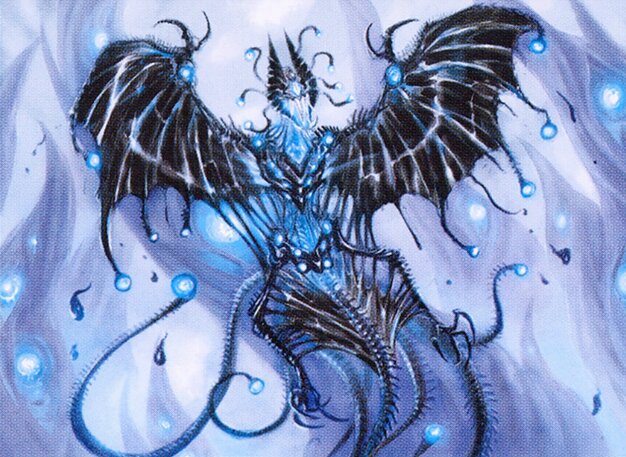

Creatures (18)
Instants (19)
Sorceries (2)
Lands (21)
60 Cards
$152.88
Sideboard
15 Cards
$13.53
Going forward, I will likely experiment with a Bant Toxic Tempo list. It would be even more aggressive, trading Bilious Skulldweller, Voidwing Hybrid, and Anoint with Affliction for strong cards like Venerated Rotpriest and Slaughter Singer, with some tweaks to sideboarding strategy. Look for a possible article and/or video on that in the future!
Go forth and may the poison counters flow!
Premium >
Enjoy our content? Wish to support our work? Join our Premium community, get access to exclusive content, remove all advertisements, and more!
- No ads: Browse the entire website ad-free, both display and video.
- Exclusive Content: Instant access to all exclusive articles only for Premium members, at your fingertips.
- Support: All your contributions get directly reinvested into the website to increase your viewing experience!
- Discord: Join our Discord server, claim your Premium role and gain access to exclusive channels where you can learn in real time!
- Special offer: For a limited time, use coupon code L95WR9JOWV to get 50% off the Annual plan!



























